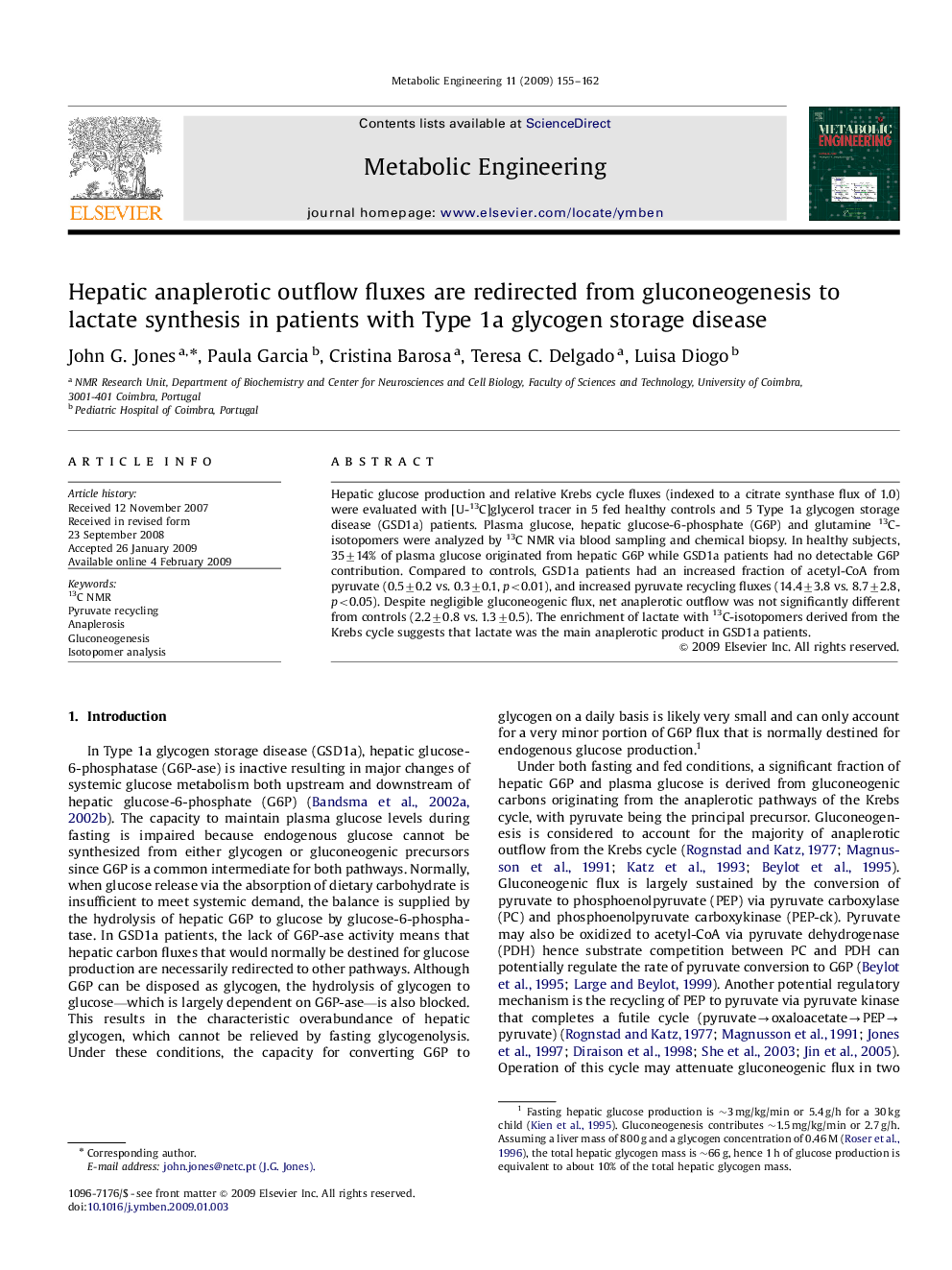| Article ID | Journal | Published Year | Pages | File Type |
|---|---|---|---|---|
| 31913 | Metabolic Engineering | 2009 | 8 Pages |
Hepatic glucose production and relative Krebs cycle fluxes (indexed to a citrate synthase flux of 1.0) were evaluated with [U-13C]glycerol tracer in 5 fed healthy controls and 5 Type 1a glycogen storage disease (GSD1a) patients. Plasma glucose, hepatic glucose-6-phosphate (G6P) and glutamine 13C-isotopomers were analyzed by 13C NMR via blood sampling and chemical biopsy. In healthy subjects, 35±14% of plasma glucose originated from hepatic G6P while GSD1a patients had no detectable G6P contribution. Compared to controls, GSD1a patients had an increased fraction of acetyl-CoA from pyruvate (0.5±0.2 vs. 0.3±0.1, p<0.01), and increased pyruvate recycling fluxes (14.4±3.8 vs. 8.7±2.8, p<0.05). Despite negligible gluconeogenic flux, net anaplerotic outflow was not significantly different from controls (2.2±0.8 vs. 1.3±0.5). The enrichment of lactate with 13C-isotopomers derived from the Krebs cycle suggests that lactate was the main anaplerotic product in GSD1a patients.
